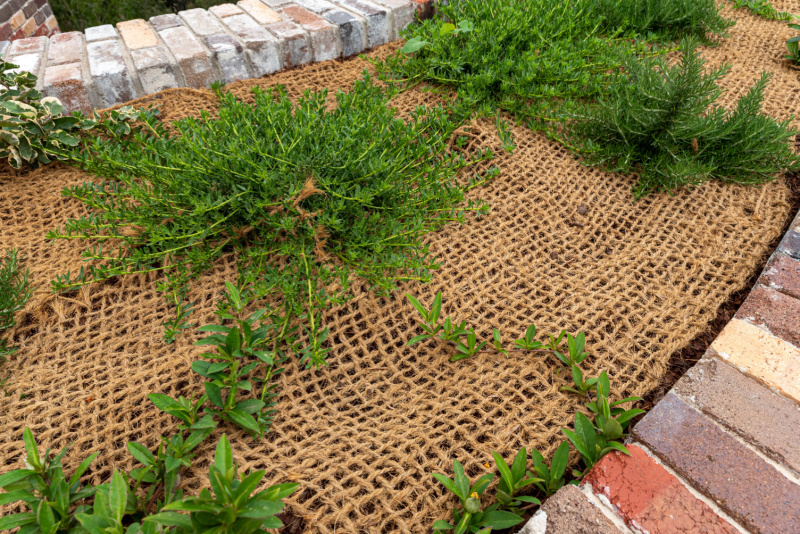- April 25, 2024
- Posted by: wellcoindustries
- Category: Burlap
No Comments
Using burlap as a weed barrier in gardens is a practical and eco-friendly approach.

What is Burlap?
Burlap is a coarse fabric made from natural fibers such as jute or hemp. It’s biodegradable and widely used in various gardening and agricultural applications due to its durability and breathability.
Benefits of Using Burlap as a Weed Barrier
- Suppresses Weeds: Burlap helps prevent weed growth by blocking sunlight from reaching the soil, thereby inhibiting the germination of weed seeds.
- Water and Air Permeable: Unlike some plastic barriers, burlap allows water and air to pass through. This means it won’t suffocate the soil; instead, it helps maintain healthy soil by letting air and moisture circulate.
- Environmentally Friendly: As a natural product, burlap decomposes over time, adding organic matter to the soil without leaving harmful residues.
How to Use Burlap as a Weed Barrier
- Prepare the Area: Clear the garden area of weeds and debris. Level the soil as much as possible to avoid significant bumps or depressions under the burlap.
- Measure and Cut: Measure the garden area and cut the burlap to fit. It’s often sold in rolls, so you might need to cut several pieces to cover larger areas.
- Lay the Burlap: Lay the burlap sheets over the soil, overlapping the edges by a few inches to ensure weeds can’t grow through the gaps.
- Secure the Burlap: Use garden staples or pins to secure the burlap to the ground. This prevents it from moving due to wind or garden activity.
- Cut Slits for Plants: If you’re planting through the burlap, cut X-shaped slits where each plant will go. Make the slits just big enough for planting to minimize the exposed soil.
- Watering: Water your plants as usual. The burlap will slow down the evaporation of moisture from the soil, potentially reducing the need for frequent watering.
- Maintenance and Replacement: Check periodically for signs of wear or holes where weeds might start to grow through. Replace the burlap as needed, usually every few years, depending on its condition.
Considerations
- Aesthetic: Burlap has a rustic look, which might not suit all garden styles. However, it can be covered with mulch to improve appearance and enhance weed suppression.
- Decomposition: Burlap will break down over time. The rate of decomposition depends on climate conditions and soil activity.
Using burlap as a weed barrier is a straightforward and sustainable method that can enhance the health of your garden while keeping it free of unwanted weeds.
